Vanessa Runs's Blog, page 5
September 24, 2019
Consider Using Day Care When Packing and Unpacking
Moving can be very stressful and whether you do it yourself or have professional help, it is difficult. Often children are confused and don’t understand what is happening to some of their favorite toys. It is also a good time to downsize some of those broken or older toys you do not want to move. Just like adults, children sometimes find it difficult to part with some of those well loved things. Many times it is also confusing leaving friends and family and the kiddos of the family are often not sure where they are going to be ending up.

Many people find it a good idea to have the children stay at Grandma’s or at day care while packing and unpacking. It will make the move easier and the kids will be happier when they arrive at the new home to see their room all set up. The kitchen is important to get settled, but the children’s rooms should be next on the agenda. Safety is always important and children can often get into dangerous cleaning products or be forgotten with all the confusion going on with the move. If possible arrange for the little ones to spend the day somewhere else. You will be glad you did and it will make your move a lot smoother.
The post Consider Using Day Care When Packing and Unpacking appeared first on Vanessa Moving & Packing Company - Moving boxes and supplies near you.
Consider Pet Day Care to Minimize Distractions
Moving can be a headache, when we really must focus on the task at hand. For those of us who have pets, they can distract our focus from important details that need our concentration during the moving process. Consider pet day care to minimize distractions.

There are many pet day care facilities and establishments that operate from the homes of animal lovers, they are great places to get quality, comforting, secure care for our pets, while we focus on the details of moving to a new residence.I was looking for more information and found it here. Pet day care centers take care of the daily needs of pets, including walking and play time, brushing and bathing, also special dietary needs.
Pet day care is available at many veterinarian practice’s, often pet boarding and daycare facilities are listed in the yellow pages, also check you news paper for listings. Don’t forget to ask what the pet day care offers, aside from feeding, Will they exercise the pet? Are pets kept in a crate or cage?, Do they have a secure area to play?
Take pets on a tour of their new home, and outside grounds. Speak in soothing, reassuring tones, animals are intelligent and will comprehend, helping ease the transition.
The post Consider Pet Day Care to Minimize Distractions appeared first on Vanessa Moving & Packing Company - Moving boxes and supplies near you.
Organize Your Supplies Before You Even Start Packing
When you are looking to move, it is important to have everything that you will need to pack your belongings. Failure to do this can result in spending more time driving to the store to purchase items and can put you behind schedule. When you are behind schedule, it often increases your stress level and makes an already stressful time much more stressful. If you take the time to organize your supplies before you even start packing, the entire experience can be fun and rewarding.
Some of the supplies that you will want to have available are boxes and packing tape. By having boxes of various sizes, you will be able to accommodate all of your belongings. If you do not want to purchase boxes, you may be able to visit your local grocery stores in order to get boxes from them that food has been delivered in. You will want to make sure that you have enough packaging tape so that you can tape up the boxes as you pack them. Then you will not be tempted to take anything out of the box until the day of the move.
Along with boxes and tape, it is important to have a marker and a notebook. Some people will use a color coding system where each room has a different color marker on the box. If you do this method, it is important that you write in the notebook which color is for each room. Another reason for the notebook is an inventory to make sure that all of your belongings arrive safely at your new home. When you finish packing a box, make sure that you mark it on the inventory page so you can keep track of how many boxes should be in each room when you arrive.

Ask for Help: It’s hard to do Alone
Moving alone can make moving day a difficult and challenging day. You will find that most individuals will happily set aside some of their time to help you move into your new house or apartment.
Check with your friends to see if they have a truck that you can use on moving day. Talk to your friends that are big and strong, they will be able to help move the large pieces of furniture. Unless you want total mayhem, you will need to delegate activities on your moving day. Always bring extra cleaning supplies to the new house or apartment. Having friends to help you clean is a great plan. You never know what the previous tenants may have left behind.
Moving day is always a stressful and challenging day. Having friends to help on moving day expedites the process and eliminates the stress of moving into the new house or apartment. Friends may also show a little more tender loving care (tlc), when transporting your items, so you will have fewer broken or missing items.
After all the boxes are moved plan some fun activities such as a picnic lunch. It’s time to relax and enjoy your new home.
The post Organize Your Supplies Before You Even Start Packing appeared first on Vanessa Moving & Packing Company - Moving boxes and supplies near you.
May 3, 2018
How To Start Hiking?
I was practically dragged during my first hike. My friends decided they wanted to go, I passed up, but they whined saying what a killjoy I am. I eventually gave in, begrudgingly said I was going to join, and much to my dismay, packed without bothering to ask or research about what to prepare. I was not even involved in planning the whole trip. I just showed up at the meeting place and thought I was perfectly good to go - boy, was I wrong.
I don’t want you to make the same mistakes I did, so I am going to share with you a few tips I have learned the hard way on how to start hiking.
1. Know Where You AreNo, I am not talking about your location. By knowing where you are, I mean assess your fitness level. You have to know if you are in tiptop shape to walk long hours or if you can hold yourself up in mountainous or rocky terrain.
While hiking makes up for a therapeutic activity that makes you forget your problems, I suggest you make sure that there is nothing urgent that might make you lose your focus while hiking or make you hurry down and proceed without caution. Make sure that your physical, mental and emotional states are all ready to take on the journey.
2. Get Involved.When you decide that you are going to join the hike, actively participate in the planning. Have a say in choosing the hiking route and when you are going to do it. Remember, in doing this, you have to determine your fitness level. You don’t want to take on The Death Trail when the last time you’ve exercised was... let’s move on.
[image error]When choosing a hiking route, it is also important to consider the time you have, because it can determine where you want to go. Are you willing to hike only for a few hours? Or are you brave enough to go on for a full day or even a few days? Think about how many miles you are comfortable hiking. Your pace may be slower because it is a foreign terrain.
Another important factor to consider is the time of year and weather. You want to be able to prepare clothes and other hiking necessities appropriate to the climate you are going to encounter.
2. Familiarize Yourself with the TrailOnce you have selected the trail, familiarize yourself with it. Do your research - get a map, check online for more information about the terrain and for people who may have possibly chronicled their experience. Through the information they volunteer, you will be able to get firsthand information from people who have seen for themselves what awaits you. Listen to what they have to say.
I personally feel hiking should always be done in groups. Not only is it safer, but also more fun. Having people to talk with, motivate you, and share moments with, is one of the main reasons why hiking can be a therapeutic activity. You get to meet new people and strengthen friendships and relationships.
[image error]When I say involve people, I also mean let some people who are not going to join the hike know where you are going to be and aware of the “worry time”. What is worry time? These are the hours later than your planned finish to allow for leisurely hiking, bask in amazing views, or maybe a sore ankle causing delay. This person or these people should know your estimated time of finish with these things factored in. If in case something happens, he should call for help and notify authorities.
I do not advise hiking alone as it is a very dangerous thing to do. I have heard of many tragic accidents where solo hikers did not make it back because they did not have anyone with them or have not notified anyone where they will be. Always involve people.
4. Pack WiselySince I know I cannot pack lightly, I have settled in saying “Pack wisely.” What you should bring to your hiking trip greatly depends on the kind of weather you are going to encounter. I believe hikers have developed packing schemes for the essentials you should bring no matter the weather. It is as follows:
Ten Essential Packing Schemes
check
1. Hydration - One should never be without water when hiking. We should replenish the fluids we sweat.
check
2. Nutrition - Hikers need food that do not require a lot of preparation and do not spoil easily.
check
3. Navigation - Don’t just rely on technology because batteries and power banks run out. Old-school maps and compasses are still a thing in hiking.
check
4. Sun protection - You don’t want to be tired and literally burned by the end of your trip. Wear sunscreen and your choice of hat.
check
5. Clothing - Need I say more?
check
6. Illumination - Flashlights and headlamps are imperative. Even if you only plan to hike for the day, you don’t know what you might encounter on the way back that might cause darkness to fall before you descend.
check
7. First-aid kit - This one I hope you never get to use, but it is another must-bring.
check
8. Fire - You need waterproof matches, a lighter, and a candle to start a fire responsibly to keep you warm or even just to make s’mores.
check
9. Emergency shelter - Whether it is a tent or a tarpaulin, it doesn’t matter, as long as it keeps you dry under the pouring rain.
check
10. Repair kit and tools - In case something needs to be fixed.
If you think this is a lot, believe me, it is not. I should also reiterate that you should ready yourself to carry all these things on your back. Nobody will carry your things for you - endurance is key.
5. Choose the Right Foot GearHiking entails hours and even days of walking. You will get physically tired, but your feet will take most of the drubbing. Invest in quality hiking shoes and socks, because, no, not all rubber shoes are the same. I had to learn this the hard way. Rubber shoes do not have the grip hiking shoes have. When you hike, the grip is extremely important. It can prevent a lot of accidents or falls. Wearing the wrong pair of shoes will drastically slow down your hike, or worse, can cause accidents.
[image error]I also urge you not to skimp on socks. I discourage you from using cotton socks, especially if you are headed somewhere cold or your trail has some bodies of water along the way. Cotton does not give enough warmth and takes too long to dry. You don’t want your feet to soak in sweat which can cause odor. You don’t want to punish your friends more after a long day of trekking.
6. Dress for SuccessNow that your feet are all taken care of, clothing is next in line. Comfort is key. As with the socks, I also discourage you from wearing anything cotton. There is a saying among hikers, “Take in an ounce of cotton, and pack out a cold body.” I find this overly dramatic, but it turns out, it is well-founded. Here’s why:
[image error]Cotton does not percolate chemicals into your skin nor does it attract wild animals. It could kill through hypothermia. Hypothermia is a condition in which the body’s temperature falls below 95 degrees. It is fatal. Hypothermia does not only happen while trudging through five feet of snow. It also happens to unsuspecting hikers in warmer months. It is a common mistake to spare on warm extra layers and wear light clothing while hiking during the summer, but this should not be the case.
7. Move GraduallyNow that you’re all pack and raring to go, I strongly advise you to move gradually. Pace yourself. Decide on a pace you know you can maintain all throughout the day. This is a common mistake for first-time hikers. They are all caught up in the excitement and being with their friends that they forget they have a challenging task at hand. Take it easy.
8. Leave It As You Found ItAs hikers, we are visitors. The trails we take are habitats for humans and animals. It will only stay beautiful and as a home to our fellow men and animals if we care for it and hike responsibly. Do not leave traces and bring your trash home.
These are some of the things I have learned in my hiking experiences. Taking up something new can be intimidating, but our hunger to discover new things and to get out of our comfort zones should be greater. Push yourself and see the beauty that awaits you.
The post How To Start Hiking? appeared first on VanessaRuns.
What To Bring On A Hike?
One of the many things hiking has (slightly) taught me is how to pack light. I cannot, for the life of me, do so. I guess that is one of the hazards when you are allergic to so many things - you always need to have a medication on you for each type of allergy. That’s just how life is if you want to survive.
After my first hike, though, I learned to determine which things I could do without and which ones I should always have on me. As I went on more hiking trips, I have added and removed things to my list to make sure that I get to trek with as much ease as I could have while hiking. If you want to know what a person (who generally does not like hiking, but does it anyway for the health benefits it provides) should bring to all his hiking trips, read on.
1. Map and Compass or Global Positioning System (GPS)A map, really? Yes! Long before technology became our “crutches”, maps and compasses were the only things you could rely on for direction. This combination won’t fail and won’t run out of juice. Imagine getting stuck in the middle of nowhere, out of battery, with no means to call someone or pinpoint where you are.
[image error]If you have a map (that is fully protected - meaning waterproofed) and a compass, these will not only tell you where you are and how far you have to go, but also help you find campsites, water, and an emergency route in case of an accident. GPS units are very useful and way more advanced, but it is always a wise decision to carry a map and a compass with you at all times.
2. Rain Gear and Extra ClothingOne of the perils when hiking is the unpredictable weather. When you set out, it may be sunny, but there’s no telling how the winds shift and change the weather. It is of grave importance that you pack rain gear, extra clothing, extra underwear, and an extra pair of socks. You will never know when you will need them. It is also always important to bring something that will keep you sufficiently warm at night if your hike is an overnight affair.
3. Water… and then More WaterIt is a simple truth - people need water. But more than that, especially for those of you who will be hiking for the first time, not hydrating enough is a major contributor to altitude sickness.
[image error]What is altitude sickness? The symptoms include headache, nausea, fatigue, and trouble sleeping due to a lack of available oxygen. Usually, ibuprofen, Tylenol or aspirin can help ease the headaches, but it takes 24 to 36 hours to acclimatize. If symptoms persist, the hiker should seek medical attention right away.
Moderately drinking more water than usual helps hikers to adjust to the climate more easily.
4. FoodAs hard as you plan to get back to the main campsite by a certain time, this almost never happens. A number of things could keep you longer like getting lost, an injury, or a particularly challenging terrain. Food is always a good idea when we feel like we are running low on the energy department and always keeps a pack of hikers happy.
Accidents are cannot be foreseen. It doesn’t matter where you are; that’s why it is called an accident. First aid kits is an essential you should never forget to pack. If you want to take your hiking skills to another level, can also take a first-aid class.
[image error]If you also have special medications, please do not ever forget to bring them. Picture this: You about to set out to hike only to discover you forgot your medication. I implore you to turn back and stay behind. Do not risk it.
Fire-starter, flashlight or lamplight, and a whistle. These three should never be without the two others.
Fire is a source of warmth (and also makes s’mores) and an effective way to signal for help if you get lost. But wait, I have to stress this part - please be responsible. There have been many reported incidents of forgotten fire or other portable cooking devices that have accidentally started a fire. Please make sure that after every use, you put out the fire or keep the cooking devices properly. We are only visitors in the places we hike in, but there are creatures that actually live here. They graciously let us into their homes, let us not destroy it by negligence.
[image error]A flashlight or lamplight is my best friend when hiking. I have difficulty seeing at night, so I always need light to know where I’m going or what I’m walking on.
I hope you’ll never need this, but whistling is a way more efficient method than screaming your lungs out to call for help - three short bursts, that’s all it takes.
7. Tent and Sleeping BagsYou will only need these if you have to spend the night on the trail, but if the hike is just a daytime affair, you can forego them. Keep in mind, though, to choose a tent and a sleeping back that is weather-appropriate to ensure your comfort and safety.
8. Knife or Multi-purpose ToolWhen trekking, you will never know what you might encounter. There may be grass or small branches that may need to be cut down so you can pass through. There may also be things that need repairing or cutting. It is always practical to have one on you.
9. Sun ProtectionThe sun is harsh and merciless, but thankfully, humanity has come up with many ways to protect us from it. You have your traditional sunscreen and SPF-rated lip balm. Walking under the blistering heat of the sun can cause sunburn. It is guaranteed you’ll be tired after the hike; there’s no need to leave burnt, too. You can also choose to wear headgear to add another layer of protection.
10. BackpackDuh, of course! You’ll want something that is durable but lightweight, with a smart design that will let you hike smartly and comfortably. I also recommend bringing a rain cover just in case. The things inside won’t matter if they’re all soaking wet, right?
[image error]Hiking will absolutely draw you out of your comfort zone. It will either be extremely hot or algid, tiring, and you won’t have Internet access or cellphone reception all the time. In a time where everything is digital and online, I think this is probably the biggest “discomfort” we, non-professional hikers, deal with.
But I’ve learned that it is good to take time off, turn off those screens, and reconnect with nature. There is something almost spiritual once you reach your destination. I also encourage you to form strong bonds with the people you hike with. I personally think hiking alone is pointless. Something (someone) you should never forget to bring - an awesome set of people to embark on this journey with to learn from, push you when the going gets tough, and share these memories with.
The post What To Bring On A Hike? appeared first on VanessaRuns.
What To Wear When Hiking?
The first time I went hiking was many years ago. It was a great learning experience for me. However, it was not a very pleasant experience due to my allergies that slowed down the group that time.
Anyway, that didn’t stop me from learning a thing or two about hiking. Today, I want to talk about the proper attire you should don if you have upcoming hiking trips. To make sure you don’t make the same outfit mistakes I did, feel free to pay heed to some of my suggestions:
1. Comfy Hiking Shoes or BootsNo, I am not talking about those flashy, stylish, and fashionable rubber shoes, I am talking about actual hiking shoes or boots. The rugged looking ones that mean serious hiking business. That’s one of the biggest mistakes I made during my hike - I thought all rubber shoes are the same -big fat no.
[image error]Hiking shoes or boots provide the grip you need to make sure you don’t trip or fall during the hike. Your footwear is one of the most, if not the most crucial part of your outfit. It will help avoid injuries or accidents. Choose your footwear wisely.
2. SocksIt goes without saying that one should always wear socks when wearing closed shoes, or at least that is what my mother would always say. In this situation, it should be. Socks are the next layer of protection for your feet. When hiking, you could walk for hours or even days on end and you certainly don’t want to be caught barefoot in your hiking shoes.
[image error]It’s unhygienic and you are inviting blisters to your feet. If you are trekking in a forestial area where you are unsure of the animals that inhibit, I would suggest wearing one pair of thin cotton socks that will absorb sweat and another thick pair that can be pulled up over the ankles to help guard against any animal or insect bite. There is no need to do this if your hike is only a day trip and an established hiker terrain.
3. Comfy Shirt and BottomsIf there was something I got right during my trip, it was my shirt. I wore a very comfortable one, neither loose nor tight, and it had moisture-wicking technology, which absorbed sweat beautifully and dried it up quickly. Keep in mind to check the weather before you embark on your hike to anticipate your clothing needs. If you know the weather is going to be cold, you must, of course, bring appropriate pieces of clothing for this weather. If it is going to be extremely hot, I recommend wearing long sleeved top to protect your skin from the sun. We hate sunburn.
[image error]Unfortunately, though, another mistake I made was wearing leggings. I know, I know. You can’t blame me, though, because it was my first time and I was absolutely clueless about hiking back then. I strongly discourage you from wearing leggings because insects can actually bite you through them.
What you want to wear is a comfortable pair of hiking pants that are stretchy enough to let you climb up the steps or rocks. I would like to emphasize this bit, please choose bottoms that do not clinch your waist tightly. There is nothing worse than hiking in very uncomfortable bottoms, except hiking in the wrong pair of shoes. Hiking will take you out of breath, do not expedite this by wearing the wrong kind of clothing.
4. Cap or HatIt’s really up to you, but I suggest you choose something lightweight. It doesn’t matter if your hiking crush sees you in an unflattering hat, you don’t want to end the trip looking like a lobster and miss the opportunity to look cute. Self-care first.
5. SunscreenClothes and headgears may not be enough to protect you from the harsh UV rays, so do not ever forget to put on sunscreen. I suggest using water-based sunscreen to avoid that sticky feeling traditional sunscreens give. You do not want perspiration to “sweat” the protection away, so choose something that is easily-absorbed by the skin.
6. Sunglasses or Necessary EyewearI have poor eyesight so I can never be without my prescription eyeglasses. But for those of you who do not need eyeglasses, you may choose to wear sunglasses to protect your eyes from the sun’s UV rays. This is optional; some prefer to wear sunglasses, while others don’t.
[image error]Hiking is not for everyone, but I encourage you to try it at least once. It is a life-enriching experience that will teach lessons in all aspects of life. It is no wonder why some people have committed themselves to make it a huge part of their lives - they do it as much as they can. I wish you luck as you take on your first hike. Don’t forget to arm yourself to teeth for boosted hiking experience.
The post What To Wear When Hiking? appeared first on VanessaRuns.
June 30, 2016
New Audiobook Release: Daughters of Distance
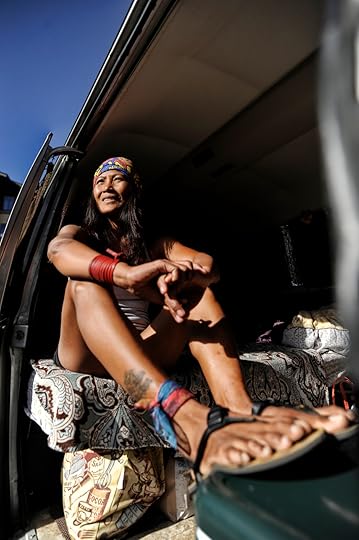 As an audiobook addict, I made the recording of Daughters of Distance a priority this year. The lovely Caity McCardell is the voice behind this recording and I am so pleased with the finish product. Thank you Caity for your tireless hours of work.
As an audiobook addict, I made the recording of Daughters of Distance a priority this year. The lovely Caity McCardell is the voice behind this recording and I am so pleased with the finish product. Thank you Caity for your tireless hours of work.
While editing these audio files, I was struck by how much Caity’s voice made it a new, different, and fresh story. I listened in wonder and often I would forget that I was listening to my own words. Instead, I was being carried away by a story I didn’t know the end to.
If you would like a copy of this audiobook for a review or a giveaway, contact me for a free download code. I’m at vanessaruns@gmail.com
Find it on Audible at:
Thank you, as always, for your support. Don’t forget to leave a review on Amazon, trail striders.
Bee stings and buttercups,
Vanessa Runs
PS: Don’t forget to join my Virtual Tribe!


June 22, 2016
New Book Release! The Summit Seeker in SPANISH
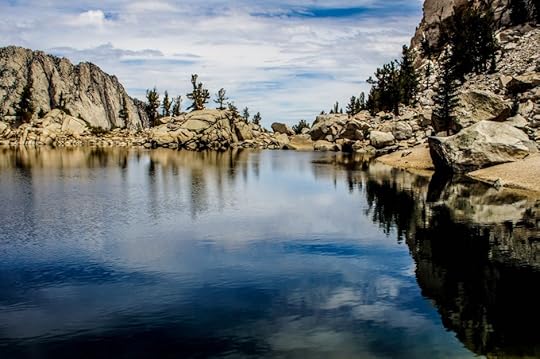 The translation of my first trail memoir into Spanish has been a longtime dream of mine and a labour of love. I couldn’t have done it without my translator Frank Barragan, or my Spanish editor Ana Maria Hardel.
The translation of my first trail memoir into Spanish has been a longtime dream of mine and a labour of love. I couldn’t have done it without my translator Frank Barragan, or my Spanish editor Ana Maria Hardel.
Thanks for the cover goes to photographer Luis Escobar and designer Trisha Reeves. My publisher Ray over at Y42K Publishing Services took over in the final stretch and we now have this beautiful product I’m so immensely proud of.
A deep and personal thank you to ALL of you—my dear readers and supporters and friends. In the meantime, I humbly present you with this Spanish-speaking version of The Summit Seeker.
Get it on Amazon:
tinyurl.com/summitseekerspanish
As always, if you’d like a free copy of the book for your local library, simply shoot me an email with your library’s name and address. I’m at vanessaruns@gmail.com. I’ll mail one right over, my expense. If you are a reviewer seeking a complimentary copy, use the same email address.
Trails & Titties,
Vanessa Runs
PS: Join my Virtual Tribe to Stay Apprised!


May 31, 2016
Join Vanessa’s Virtual Tribe!
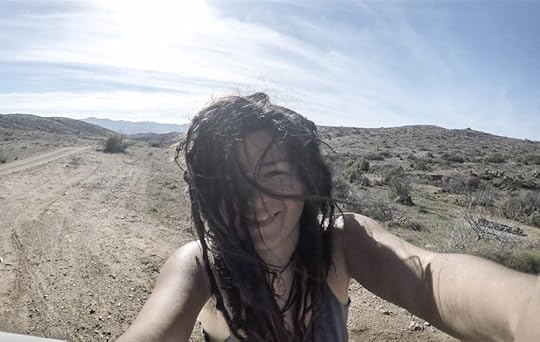 I’ve been thinking about starting this for almost a year now. I’ve gone back and forth, mostly because I don’t really want to own a “mailing list” and I’m not sure how else to describe it. I guess I don’t think of this as an email list, but as a community. My Virtual Tribe. I hope you’ll be a part of it.
I’ve been thinking about starting this for almost a year now. I’ve gone back and forth, mostly because I don’t really want to own a “mailing list” and I’m not sure how else to describe it. I guess I don’t think of this as an email list, but as a community. My Virtual Tribe. I hope you’ll be a part of it.
This will be an informal email list of family, friends and supporters. I’ll send out occasional (monthly or less) email updates on how we’re doing, where we are, and cool things we’ve seen.
I’m looking for quality correspondence. I’m looking for people from a wide variety of ages and backgrounds I can learn from and share my own ideas with. Ideally it would be more of a penpalship than an email list, expect you’re welcome to respond or not.
I’d also like to use this group as a sounding board for some of my ideas. Maybe get some feedback from anyone moved to reply. I’m happy to correspond with anyone on the list if you’ll just be patient. I have a wifi connection maybe once or twice a month and I’m not sure how many people will write back.
Basically, I’m looking to build a more intimate community of supporters than what I currently have on social media. My social media is growing, guys! I think that’s amazing, but unfortunately it means I can’t know everyone following me on Facebook. I’d also like to spend a lot less time online without missing out on some of you (yes, YOU!).
This group will also be the first to know when there’s a new book of mine for sale, or if there’s anyone I’m looking to hire. In the past two years I’ve paid for the services of editors, translators, musicians, artists, graphic designers, publishers, audiobook narrators, and more. I anticipate more of this in my future. I normally use Facebook to find people to hire, but I wouldn’t mind having a more intimate network to draw talent from. Location is not an issue.
You’ll also get first dibs on interview opportunities, free review copies, info about possible meetups with us, and any other benefits that come my way.
If any of this interests you in the least, I would love to have you on my Virtual Tribe! Just send your email to vanessaruns@gmail.com. I’ve got some great stuff coming up that I’m really excited about. I can’t wait to tell you more.
Again, some of what you can expect:
Updates on whether or not we’re still alive
Awesome or funny stories about our travels
Where you can meet us and when
Possible job opportunities for editors and artists
Any new books/audiobooks I’ve put out (you’ll be the first to know!)
Thoughts I’m thunking about future projects that are too premature for social media/blogging
People I am looking to interview for future projects/books
Info on any giveaways I’m hosting (race entries, books, etc)
Updates on our dog Ginger’s health (age 15 human, age 100+ dog, but she thinks she’s human)
While I expect the majority of this list will be made up of known friends and family, I hope to also snag people with different values and lifestyles who can help challenge and expand my perspectives (respectfully, of course).
See you on The Twitter.
Regretfully Awkward,
Vanessa Runs
HOW TO JOIN VANESSA’S VIRTUAL TRIBE:
Email vanessaruns@gmail.com and let me know you’re in!


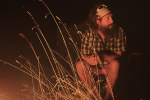
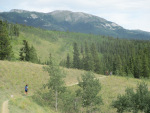
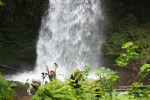
You May Also Enjoy:
10 Non-Running Books for Your Athlete
The Journey is Better Than the Finish Line
****
Check out my books:


May 10, 2016
Daughter of Distance of the Week: Stephanie Eldore
One of my goals this year is to support more women in endurance and help them connect to each other. There are so many of us out there, grinding out those miles and sometimes feeling alone in our awesomeness.
I thought: What better way to promote female athletes than to feature one Daughter of Distance each week? These will be women who love and embrace endurance sports of all kinds. They are not necessarily elites, though they can be. The majority of them are “regular” moms and wives and girlfriends and friends, balancing work and kids and training.
This week’s Daughter of Distance is: Stephanie Eldore!
Check her out:
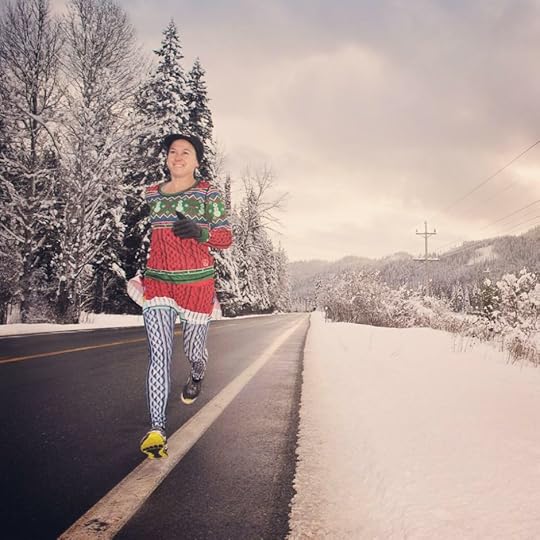
Who Is Stephanie?
I am a 2nd, 3rd, and 4th grade teacher at a beautiful little rural school, Priest Lake Elementary, in North Idaho. I have been teaching here full time since 1999, and I love it. Being able to positively impact the lives of children every day is an incredible occupation to have, and I never forget that. Having the opportunity to teach in an ideal location like Priest Lake is icing on the cake!
When I’m not teaching I am always engaged in some sort of outdoor activity. I love to ski, mountain bike, hike, camp, swim, wakeboard, and run. Most of my free time is spent running distance. It is my chance to set my mind free, and let go of the pain, stress, and worry that creeps into every day.
My life changed dramatically when I first discovered the healing benefits of running after completing my first marathon 20 years ago. In 2010 I ran my first ultra, and now there’s no turning back. I’ve now run 82 marathons and ultras, and have a long list of adventures that I’m looking forward to in the years ahead.
My greatest joy is my family. I have an incredible 6-year-old little girl named Abigail who brings sunshine and happiness into every day. My husband Ken is also a great source of joy in my life. We go on lots of amazing family adventures together (many of them revolving around a challenging race in a fun location). Abby has been at the finish line of so many races that we’re pretty certain that she’ll be outrunning both of us very soon. Life is good!
What is your most memorable endurance experience?
My most memorable endurance experience was the Javelina Jundred last year. It was my 2nd 100-miler, and I was lucky enough to have my family there to cheer me on. I encountered the normal obstacles that one encounters when running that far, but I felt a lot stronger and more mentally focused than I did during my first 100. I wrote a little blog about my thoughts during that race. Here is the link: http://ultraaltrasteph.com/blog/what-i-think-about-while-running-100-miles
Tell me about some of your goals and plans for 2016.
I have already completed one goal by running the Black Canyon 100K. I also have the Yakima Skyline 50K, Sun Mountain 50 miler, Priest Lake 50K, Lookout Lake 30K, Volcanic 50, Spokane Marathon, and Javelina Jundred on my race calendar so far… and I’ll probably add a couple more!
You can connect with Stephanie any of the following ways:
Facebook: Stephanie Rogers Eldore
Instagram: @stepheldore
Blog: ultraaltrasteph.com

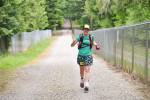
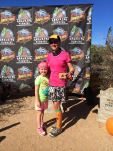
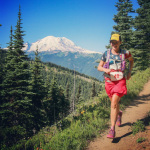
What does it mean to be a female in endurance sports?
This series is inspired by my book: Daughters of Distance: Stories of Women in Endurance Sport. Here, hundreds of women open up about their realities as athletes, wives, girlfriends and mothers. From the intimacy of the bedroom to the community of competition, some of these stories will encourage and uplift. Others will surprise and infuriate. Welcome to the beautiful and complicated world of strong women.
Check out the Amazon reviews and purchase at tinyurl.com/daughtersofdistance
Will you be our next Daughter of Distance?
Interested in being featured as a Daughter of Distance? Shoot me an email at vanessaruns@gmail.com.
This is a project to feature one woman in endurance each week on social media. The goal is to connect strong women across sports and across the world in celebration and appreciation. Each Daughter of Distance will receive a copy of my book, Daughters of Distance: Stories of Women in Endurance Sports.
And don’t forget to tag your photos and stories with #daughtersofdistance to connect to this awesome community.
See you on the singletrack!
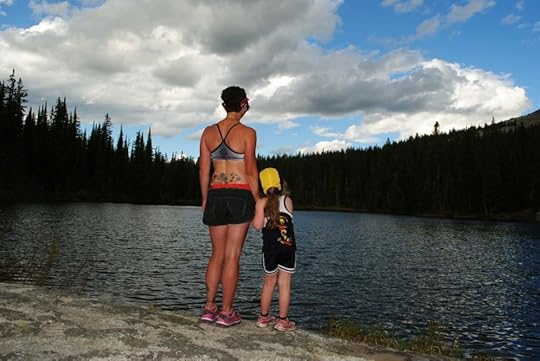
You May Also Enjoy:
How to Balance Endurance Training and Family: Tips & Tricks for Parents
Menopause Management Tips for the Active Endurance Athlete
****
Other Books:





